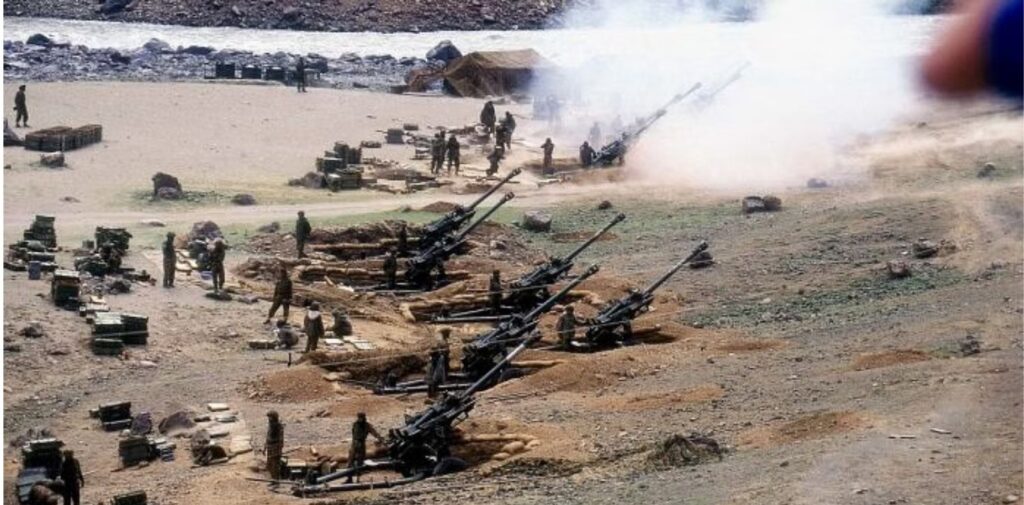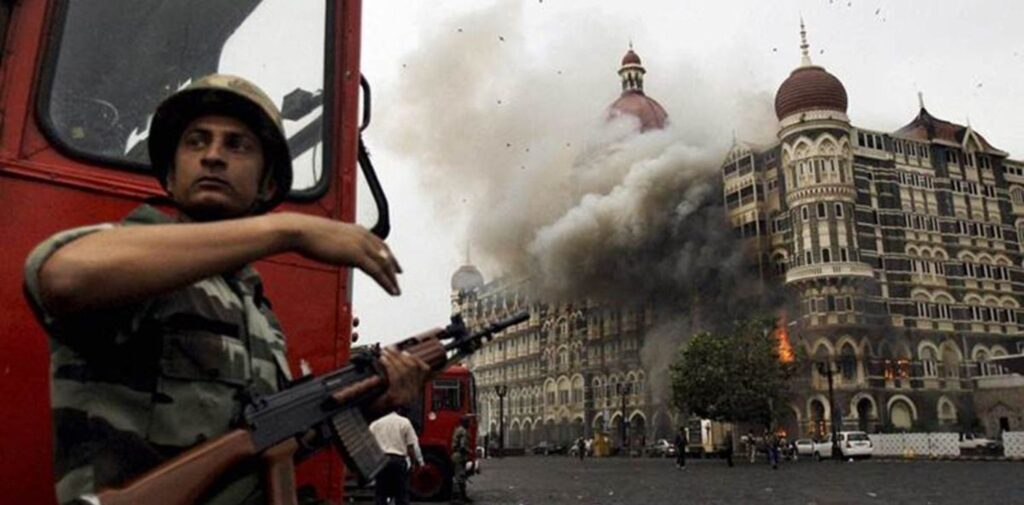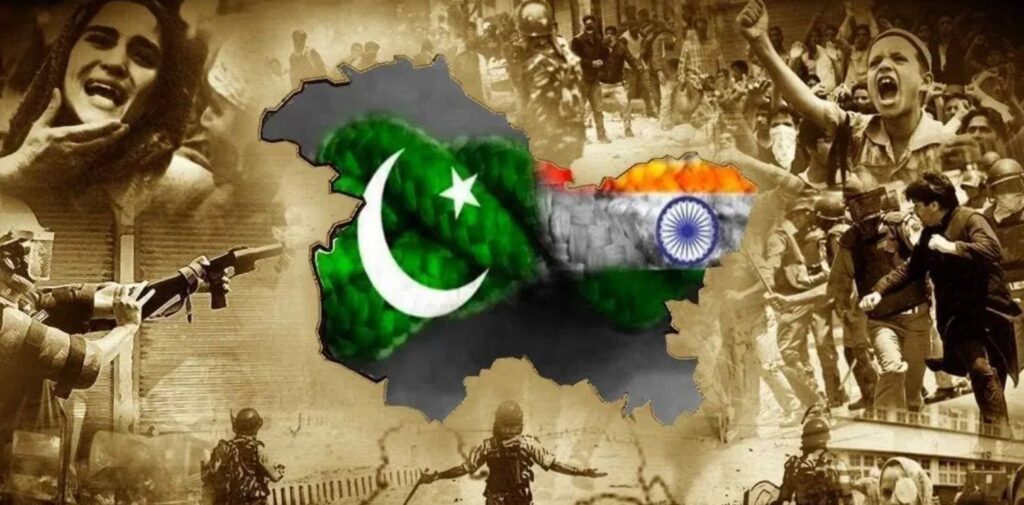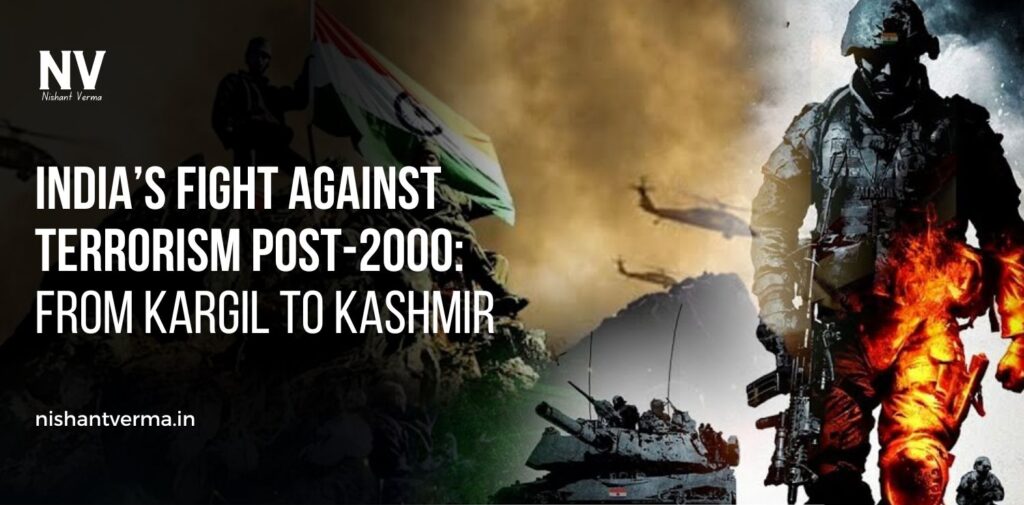Terrorism has been a major challenge for India, especially in the post-2000 era. The country has witnessed several devastating terrorist attacks, often attributed to external and internal sources, and has had to evolve its strategies for dealing with this threat. India fight against terrorism in the 21st century, particularly in regions like Kashmir, has been marked by significant military and political efforts. From the Kargil War to the ongoing Kashmir conflict, the journey has been filled with struggles, resilience, and an evolving approach to counterterrorism. In this article, we will explore the key moments in India fight against terrorism post-2000 and the impact these events have had on the nation.
1. The Kargil War: A Defining Moment in India’s War Against Terrorism
One of the earliest significant challenges India faced in the 21st century was the Kargil War in 1999, which set the stage for India’s approach to handling terrorism in the coming years. Though it occurred just before 2000, the war had long-lasting effects on India’s security policies and its stance against terrorism. The conflict, fought between India and Pakistan in the Kargil region of Jammu and Kashmir, saw Pakistani forces infiltrating Indian territory, leading to intense military clashes.
A. Terrorism’s Role in the Kargil War
The Kargil War was not only about conventional warfare but also about the rising threat of terrorism backed by Pakistan. Pakistani militants, disguised as regular soldiers, infiltrated the Indian side of the Line of Control (LoC) and began engaging in terror activities. While the war ended with India reclaiming its territory, the attack highlighted how cross-border terrorism was becoming a significant threat to India’s national security.
B. Lessons Learned
Following the war, India recognized the need to strengthen its intelligence and military capabilities to prevent further terrorist infiltration. The conflict also revealed the necessity of international support in exposing Pakistan’s role in harboring terrorism. As a result, India began to adopt a more aggressive approach toward terrorism, both domestically and in its foreign policy.

2. The 2001 Indian Parliament Attack: A Turning Point in Counterterrorism
On December 13, 2001, India faced one of the most audacious terrorist attacks in its history—the attack on the Indian Parliament in New Delhi. Five armed militants stormed the Parliament complex, aiming to assassinate key political leaders and disrupt the country’s democratic processes.
A. Immediate Impact on National Security
The attack shocked the nation, leading to heightened security across India. The event was a wake-up call for India, demonstrating that the threat of terrorism was not just confined to Jammu and Kashmir but could strike at the heart of the country’s governance. In response, India implemented stricter counterterrorism measures and began focusing more on intelligence sharing with international agencies.
B. Strengthening of Anti-Terror Laws
In the aftermath of the Parliament attack, India passed the Prevention of Terrorism Act (POTA) in 2002. This law gave security forces enhanced powers to detain and prosecute individuals involved in terrorism. It also allowed for the freezing of assets linked to terrorist groups. While POTA was seen as an important step in fighting terrorism, it faced criticism for being misused in some cases and was later repealed in 2004.
3. The 26/11 Mumbai Attacks: A Wake-Up Call for India’s Counterterrorism Strategy
One of the most tragic and impactful terrorist attacks in Indian history occurred on November 26, 2008, when 10 heavily armed terrorists from Pakistan’s Lashkar-e-Taiba (LeT) group carried out a series of coordinated attacks in Mumbai. The terrorists targeted iconic sites like the Taj Mahal Palace Hotel, CST Railway Station, and Nariman House, killing over 170 people and injuring hundreds more.
A. The Global Nature of Terrorism
The 26/11 attacks highlighted the global nature of terrorism and its ability to reach even the most secure urban centers. The attackers came by sea, bypassing India’s coastal security measures. The attack was planned meticulously and was an example of how terrorism was evolving in its tactics and reach.
B. India’s Response and Counterterrorism Measures
In the wake of the attacks, India adopted a more proactive approach to counterterrorism. The government increased security measures at vital installations, revamped coastal security, and focused on better coordination among various intelligence agencies. The attacks also put significant pressure on India to take a more forceful stance against Pakistan, which India blamed for harboring and supporting terrorist organizations like LeT.

4. The Kashmir Conflict: A Long-Standing Battle Against Terrorism
Kashmir has been at the center of India’s struggle against terrorism since the late 1980s. While the origins of the insurgency in Kashmir go back further, the post-2000 period has seen a significant increase in terrorist activity in the region. Jammu and Kashmir has been the epicenter of cross-border terrorism, with militants from Pakistan infiltrating the region to wage war against Indian forces.
A. The Role of Pakistan-based Terrorist Groups
Groups like Lashkar-e-Taiba (LeT), Jaish-e-Mohammed (JeM), and Hizbul Mujahideen have been responsible for several attacks in Kashmir. These groups, with strong links to Pakistan’s military and intelligence agencies, have sought to destabilize the region and push for its secession from India. The 2001 attack on the Indian Parliament and the 26/11 Mumbai attacks are both linked to these groups, which operate from across the border.
B. Counterterrorism Operations in Kashmir
India has deployed a significant portion of its military in Kashmir, engaging in regular counterterrorism operations to neutralize militants and restore order. These operations, which often involve intelligence gathering, surveillance, and direct combat, have seen some success but have also led to considerable civilian casualties and human rights concerns. The ongoing conflict has led to a cycle of violence and resentment, with innocent civilians often caught in the crossfire.
Despite the challenges, India has strengthened its security apparatus in Kashmir, with improved border management, the use of technology, and better cooperation with international intelligence agencies.

5. Evolving Terrorist Tactics and India’s Response
In the years following the 2000s, terrorists have become more adaptive, using new tactics and technology to carry out their operations. From online radicalization to the use of improvised explosive devices (IEDs) and suicide bombings, terrorist groups have been quick to exploit modern technologies.
A. Cyberterrorism and Social Media
In recent years, cyberterrorism has emerged as a new front in India fight against terrorism. Terrorist groups now use social media platforms to recruit new members, spread propaganda, and coordinate attacks. This digital form of terrorism has posed a new challenge for India, requiring greater investment in cybersecurity and the monitoring of online activities.
B. Increasing Cooperation with Global Counterterrorism Efforts
India has also stepped up its international cooperation in counterterrorism efforts. India has joined multilateral organizations like the United Nations and the Financial Action Task Force (FATF) to enhance its ability to track, prevent, and punish terrorist activities. India’s efforts to forge partnerships with countries like the United States, Israel, and Russia in intelligence-sharing and counterterrorism have helped to strengthen its position in the global fight against terrorism.
Conclusion: India Fight Against Terrorism Post-2000
India fight against terrorism post-2000 has been long and challenging, with significant milestones like the Kargil War, the 2001 Parliament attack, the 26/11 Mumbai attacks, and the ongoing Kashmir conflict. While India has made considerable progress in improving its counterterrorism strategy, challenges remain. The role of external actors, particularly Pakistan, continues to be a significant factor in the region’s instability.
The evolving nature of terrorism requires India to constantly adapt its strategies, enhance intelligence capabilities, and cooperate with global partners. With a resolute commitment to its national security and the resilience of its people, India will continue its fight against terrorism, seeking to ensure peace and stability for its future generations.




